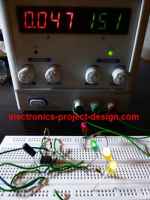CE Mark
What is CE Mark?
Products that are exported to the EC and that are placed on the market for the final end user have to carry this mark. The manufacturer or his representative is required to issue a declaration of conformity which must be kept available to the enforcement authority for 10 years following the placing of the products in the market. He is required also to affixed the mark on the products, or its packaging, instructions or guarantee certificate.
The CE mark is as shown below and must be at least 5mm in height.
What it means to have CE Mark?
When the CE Mark is affixed, it means that the products conform to EMC(Electromagnetic Compatibility) Directive and other relevant Directives that are relevant to the products. Many electrical appliances also have to conform to Low Voltage Directive. Electrical toys will have to conform to Toy Safety Directive.
The EC declaration of conformity must include components such as:
a) Description of the products.
b) A reference to the specifications under which conformity is declared. The reference to the specifications does not necessarily mean that you have to test these specifications. Three scenarios are apparent.
i) The product intrinsically meets the requirements of the Directive and does not need testing. Most electronic products are not able to follow this option.
ii) Declaration is make on existing test results. If the products already conform to existing standards such as FCC for emissions and IEC 801 for immunity, then you may be confident that the product will meet the appropriate harmonized standards without further testing.
iii) Test fully to the harmonized standards or choose the technical file route. For complex and new products, this will be costly but is essential.
c) Signatory to bind the manufacturer or his representative.
d) where necessary, reference to the EC type examination certificate for radio transmitters.
Compliance with the CE Mark Directive
There are 2 routes for manufacturer to comply to the CE Mark Directive.
a) Self Certification
Most manufacturer will follow this route which is self certification to harmonized standards. Harmonized standards are those CENELEC or ETSI standards which are announced in the Official Journal of the European Communities (OJEC).
The advantage of certifying against standards is that there is no mandatory requirement for testing by an independent test house. The only requirement is that the manufacturer makes a declaration of conformity as mentioned above which references the standards against which compliance is claimed.
The manufacturer have to make sure that he tests the product to assure himself that it does meet the requirements of the standards and this can be done in-house. In the long run, it is cheaper to have its own basic in-house equipments to test the product instead of sending it to an independent test house which is costly most of the time.
By having these facilities, it will enable the manufacturer to design in the product to conform to the standards as most of the time, a lot of modification to the product needs to be done in order to conform to the standards.
b) The Technical Construction File
The second route is to generate a TCF(Technical Construction File) which will be held by the relevant authorites as soon as the product is placed on the market and for 10 years after the last item has been supplied.
TCF should describe the apparatus, the procedures used to ensure conformity and a technical report from a competent body. It may or may not contain test data. The difference between this route and the first route is that the technical report or certificate is issued by a competent body.
This route is normally taken when existing standards cannot be applied or when testing is not practical because of the size of the product.
This route is also taken when manufacturer decides to apply the harmonized standards in part only, or when the product has been tested to standards that are believed to have met the essential requirements.
Find out other certification marks such as S Mark, VDE Mark, UL Mark, N Mark, F1 Mark here.
Back To CE Mark Home Page



New! Comments
Have your say about what you just read! Leave us a comment in the box below.